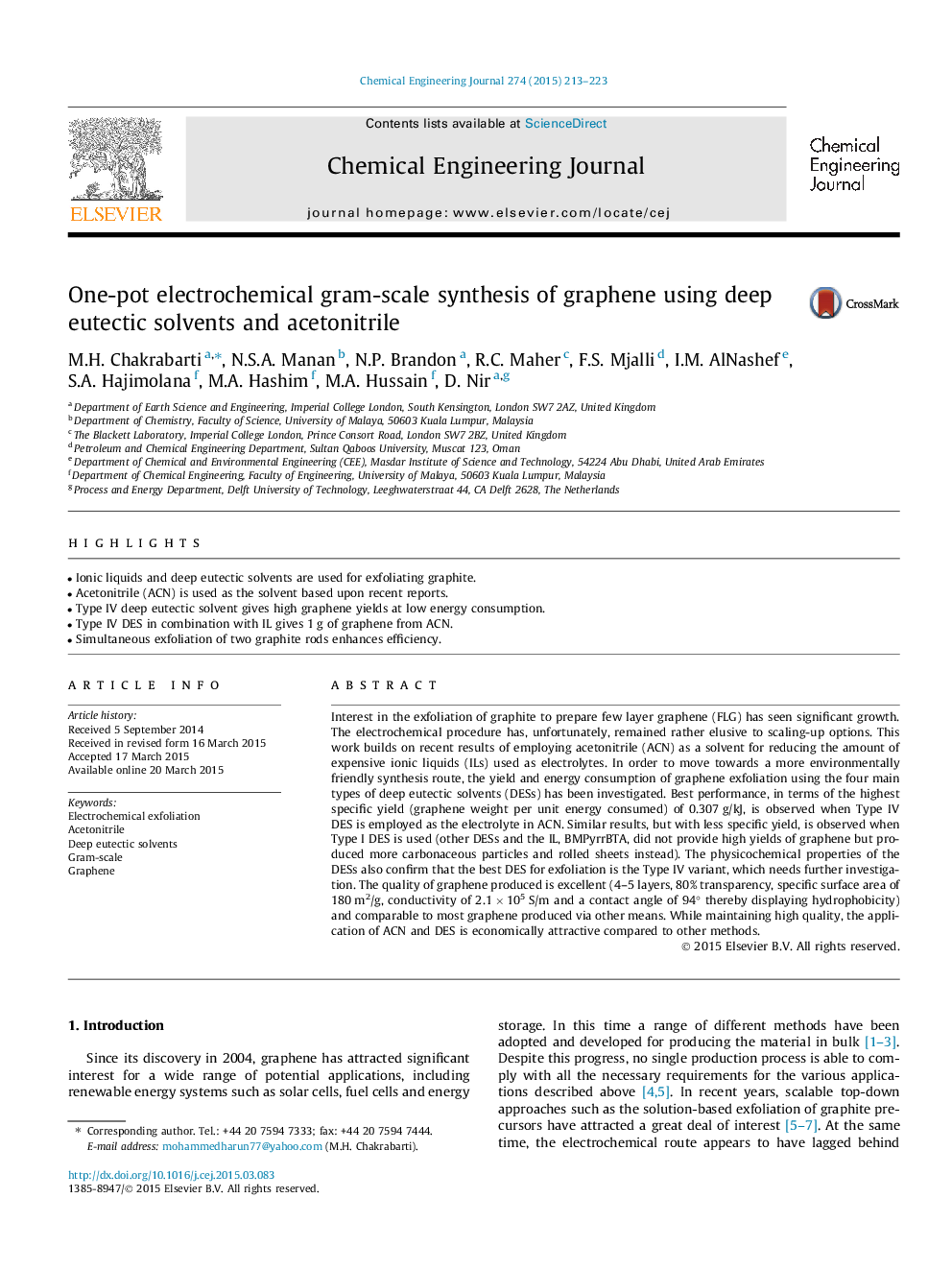| کد مقاله | کد نشریه | سال انتشار | مقاله انگلیسی | نسخه تمام متن |
|---|---|---|---|---|
| 146410 | 456369 | 2015 | 11 صفحه PDF | دانلود رایگان |
• Ionic liquids and deep eutectic solvents are used for exfoliating graphite.
• Acetonitrile (ACN) is used as the solvent based upon recent reports.
• Type IV deep eutectic solvent gives high graphene yields at low energy consumption.
• Type IV DES in combination with IL gives 1 g of graphene from ACN.
• Simultaneous exfoliation of two graphite rods enhances efficiency.
Interest in the exfoliation of graphite to prepare few layer graphene (FLG) has seen significant growth. The electrochemical procedure has, unfortunately, remained rather elusive to scaling-up options. This work builds on recent results of employing acetonitrile (ACN) as a solvent for reducing the amount of expensive ionic liquids (ILs) used as electrolytes. In order to move towards a more environmentally friendly synthesis route, the yield and energy consumption of graphene exfoliation using the four main types of deep eutectic solvents (DESs) has been investigated. Best performance, in terms of the highest specific yield (graphene weight per unit energy consumed) of 0.307 g/kJ, is observed when Type IV DES is employed as the electrolyte in ACN. Similar results, but with less specific yield, is observed when Type I DES is used (other DESs and the IL, BMPyrrBTA, did not provide high yields of graphene but produced more carbonaceous particles and rolled sheets instead). The physicochemical properties of the DESs also confirm that the best DES for exfoliation is the Type IV variant, which needs further investigation. The quality of graphene produced is excellent (4–5 layers, 80% transparency, specific surface area of 180 m2/g, conductivity of 2.1 × 105 S/m and a contact angle of 94° thereby displaying hydrophobicity) and comparable to most graphene produced via other means. While maintaining high quality, the application of ACN and DES is economically attractive compared to other methods.
Journal: Chemical Engineering Journal - Volume 274, 15 August 2015, Pages 213–223
